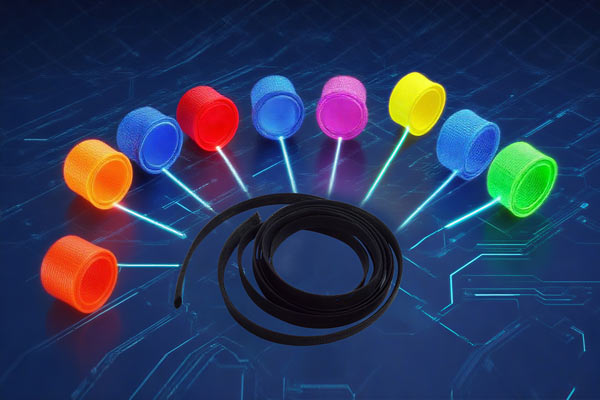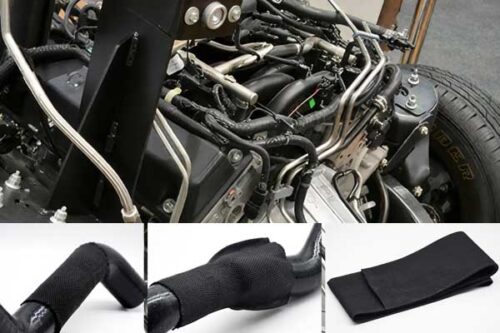In the world of wire harness sleeving , black reigns supreme, while colors like white, gray, and other bright hues are far less common. This isn’t just a matter of aesthetics—it’s a practical decision driven by durability, cost, and functionality.
When It Comes to Wire Harness Sleeving, Black Isn’t Just a Color—It’s an Industry Standard.
In the world of cable and wire harness protection, color isn’t just a design decision—it’s a calculated industrial choice. Walk through any automotive plant, power station, or manufacturing floor, and you’ll likely see one thing in common: black wire harness sleeving.
So why does black dominate, while white, gray, and bright-colored sleeves remain outliers?
Let’s break down the industrial logic behind this color hierarchy.

Why Black Is the Standard Choice
1.Superior Dirt Resistance
In harsh industrial environments—dusty factories, vehicle engine compartments, outdoor installations—black sleeves mask grime far better than lighter colors. This keeps systems looking cleaner longer, and reduces the need for maintenance.
2.Better UV Resistance
Black sleeving typically contains carbon black, a material that significantly enhances UV resistance. This makes it ideal for applications exposed to sunlight and heat, such as:
- Engine bays
- Solar installations
- Outdoor enclosures
3.Color Compatibility and Neutral Appearance
Black is a universal neutral, matching effortlessly with most wire colors, connectors, and electrical components. It integrates seamlessly without standing out.
4.Cost Efficiency & Supply Chain Advantages
Black PET or PP materials are cheaper, easier to source, and more stable during manufacturing. They’re compatible with large-scale, standardized production—making them a win for both suppliers and OEMs.
Why Colored Sleeving Is Less Common
While colors like white, gray, red, or blue have their place, their use is limited due to:
1.Poor Stain Resistance
Lighter colors, especially white or light gray, quickly show dirt, making them less desirable in high-contact or dirty environments.
2.Lower UV Durability
Unless formulated with added stabilizers, colored sleeving is more prone to fading, brittleness, and degradation when exposed to sunlight.
3.Low Volume, High Customization
Colors such as red, yellow, or blue are usually requested for specific coding purposes—voltage levels, signal identification, or safety alerts. These are often custom orders and do not benefit from the economies of scale black enjoys.
4.Complex Inventory Management
Producing and stocking multiple colors in small volumes can create high switching costs, frequent machine adjustments, and increased warehousing complexity—driving up production costs.
Common Use Cases for Colored Sleeving
| Color | Typical Application |
| Red | High-voltage lines, alarm systems, power positives |
| Blue | Network cables, negative terminals, signal wires |
| Yellow | Control wires, safety alerts |
| Gray | Medical devices, data center coding |
| White | Clean indoor environments, aesthetic needs |
| Transparent | Visual inspections, demo and testing setups |
In the industrial world, black sleeving reigns supreme not because of tradition, but because of function. It provides unmatched resilience, UV protection, cost-efficiency, and flexibility. While colored sleeving plays a crucial role in specialized identification and safety coding, its usage remains limited and highly application-specific.
Black isn’t just a color—it’s a performance-driven choice.


